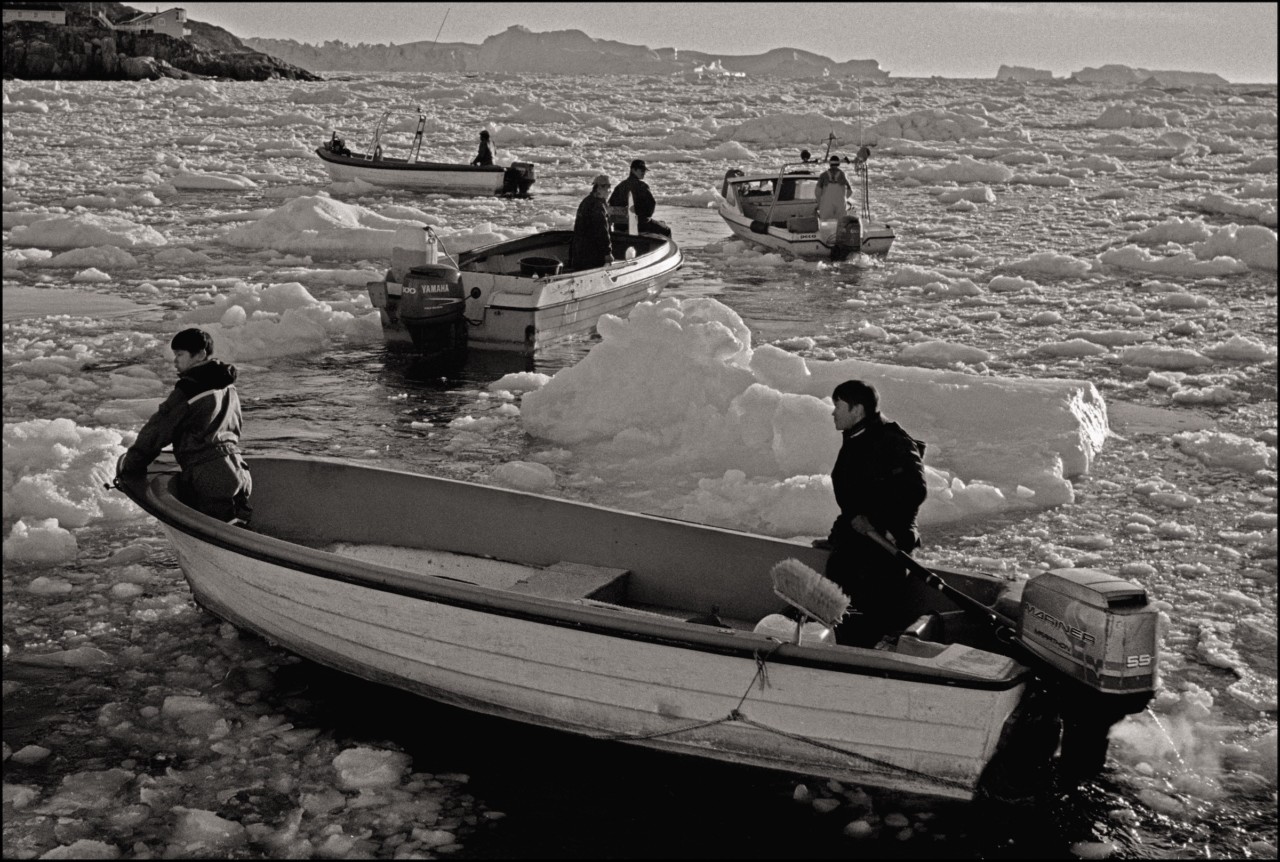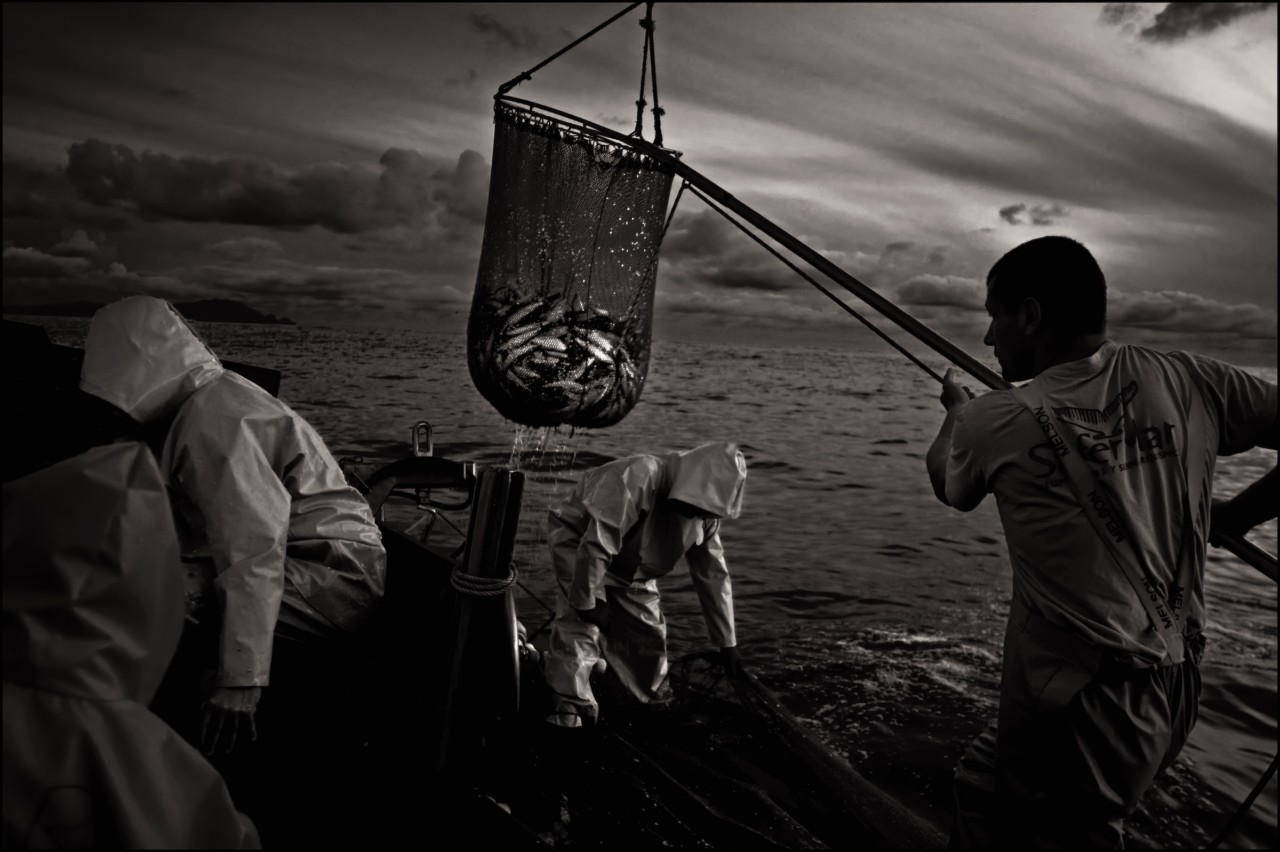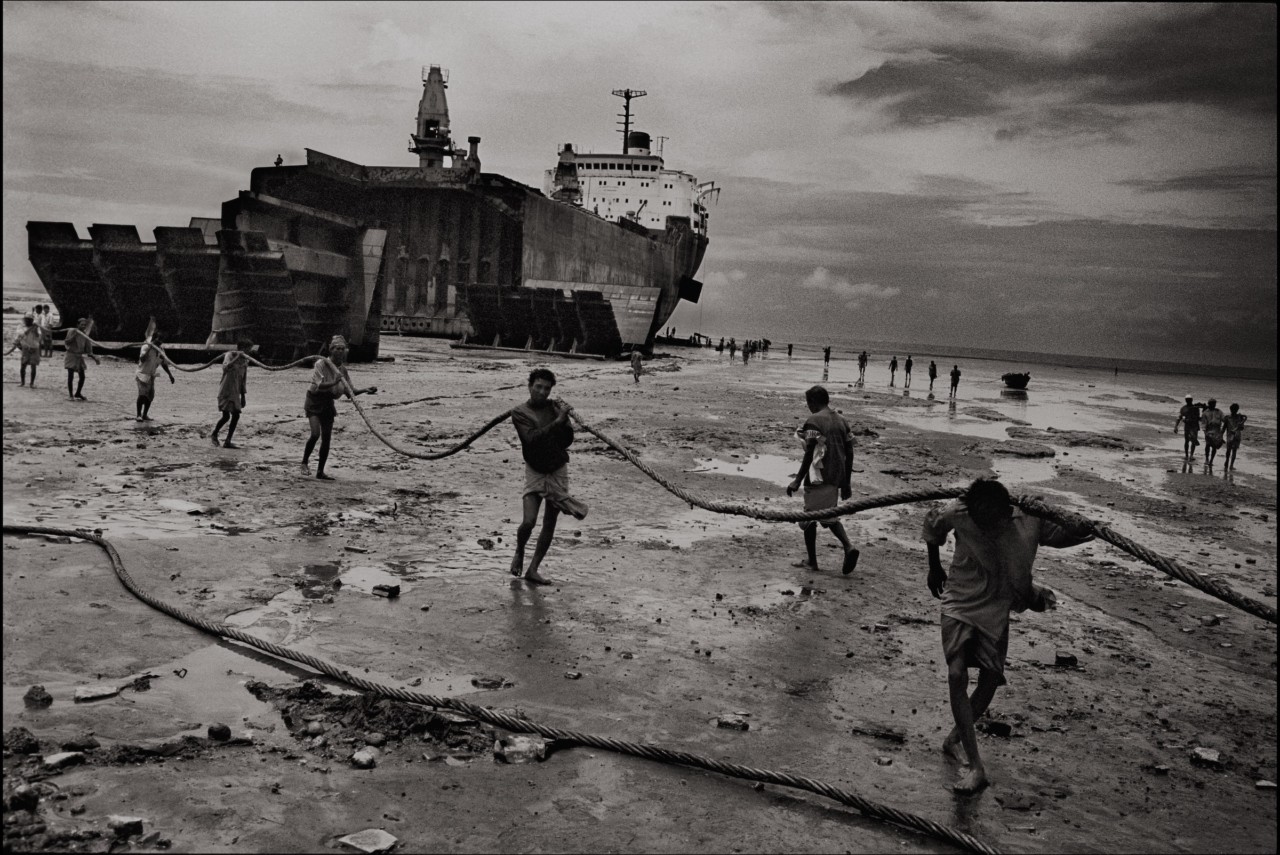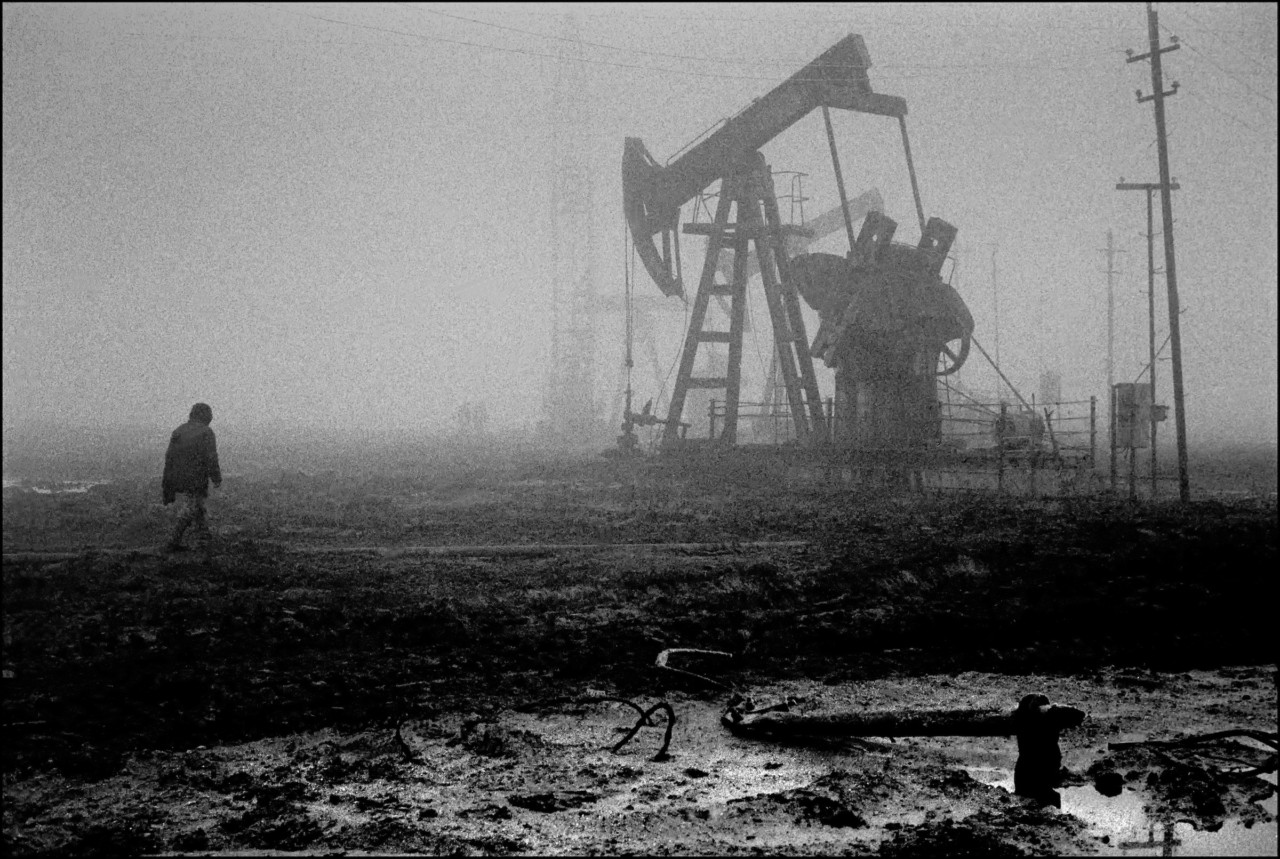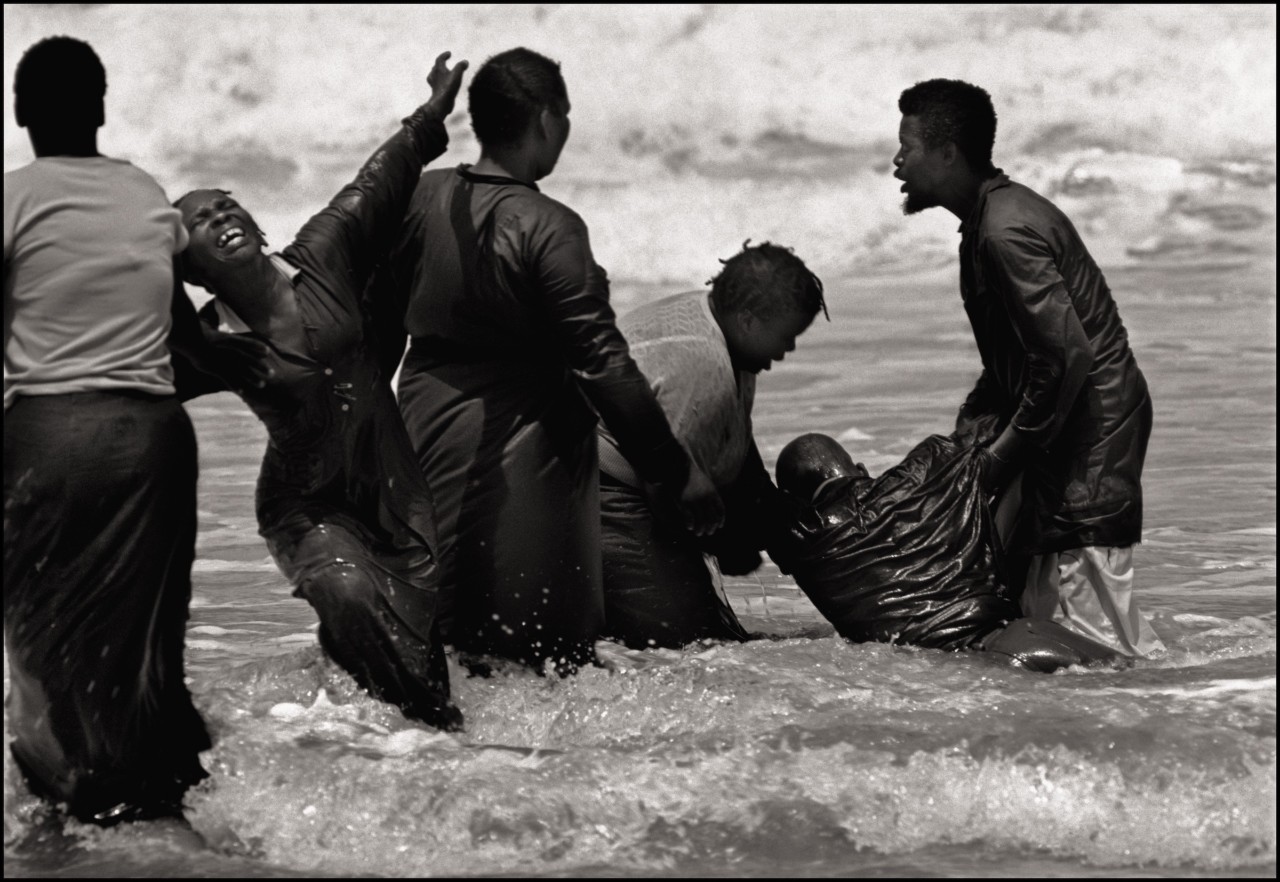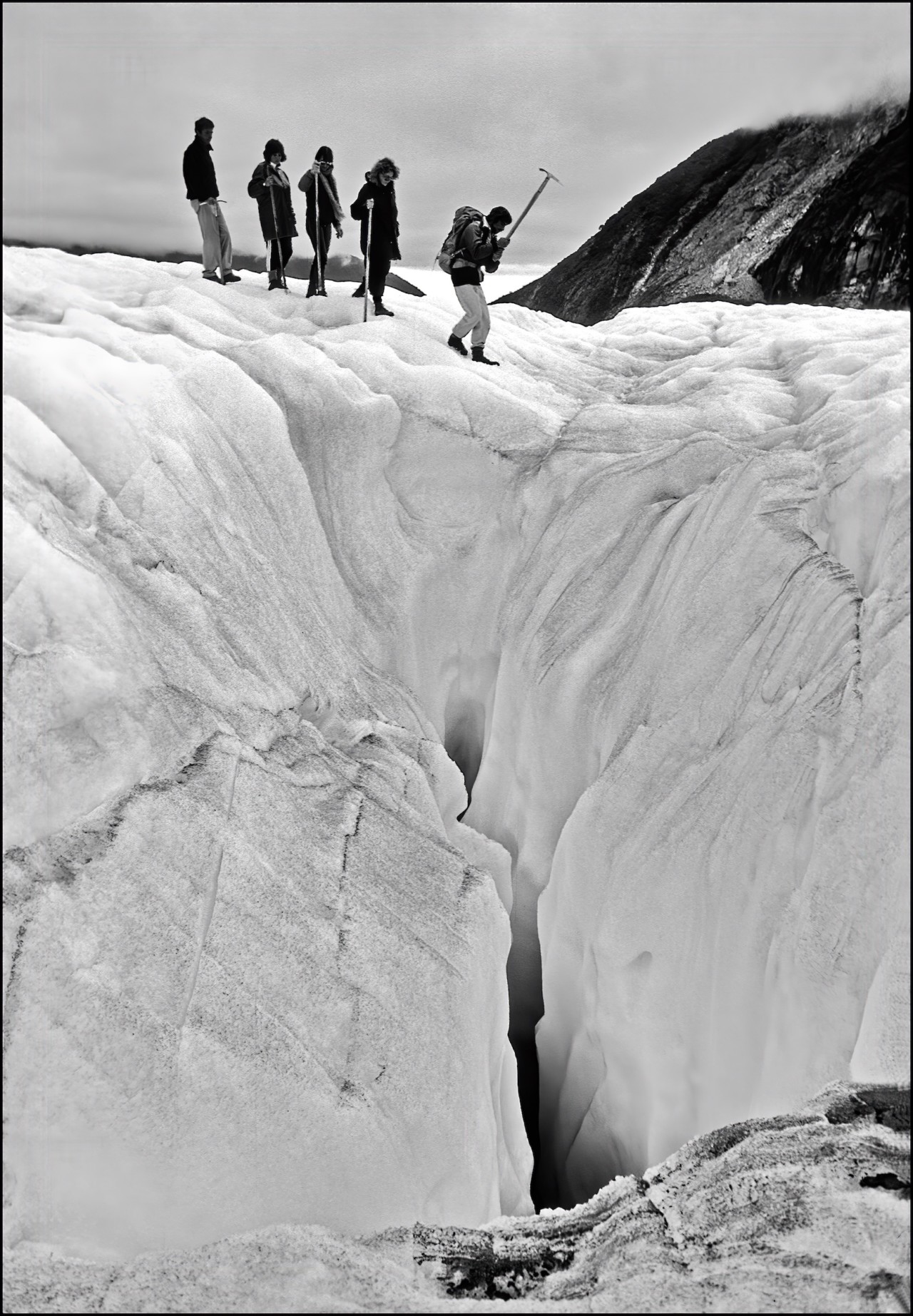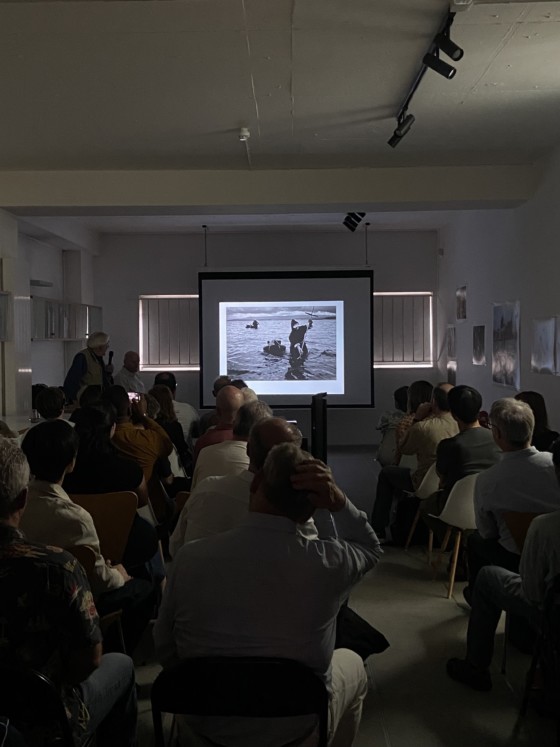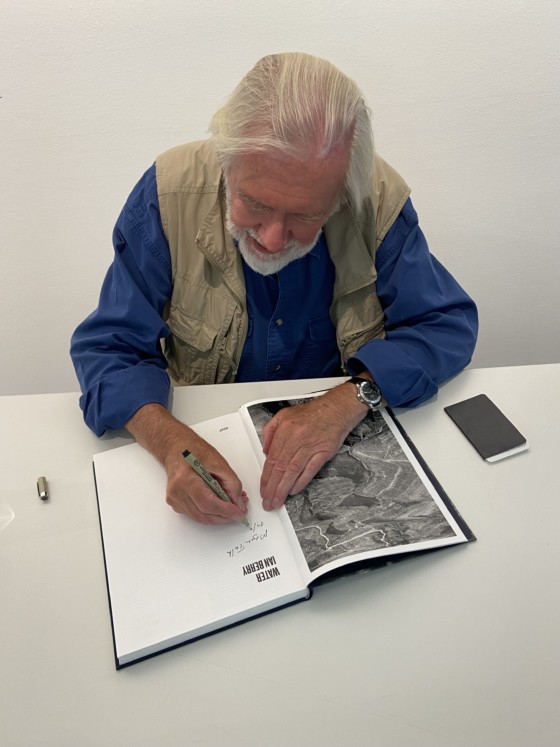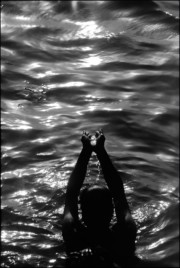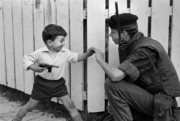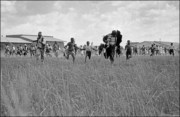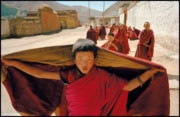Water, the New Book by Ian Berry
Following his book launch at the Magnum Gallery in London last month, Ian Berry shares the story behind five images from his new book, 'Water.'
“Some thirteen years ago, I had just returned home from reporting on Greenland’s shrinking glaciers and ice melt for The Climate Group, a non-profit organization working with businesses and governments globally to address climate change,” Ian Berry explains in the introduction to this recent talk at the Magnum Gallery and Bookshop in London. “I started to think about water as a subject for a long-term project under the working title Water: Source of Life.”
Berry stands in front of the packed crowd, gathered to celebrate the launch of his new book, Water, which was published by GOST earlier this year. The book, he goes on to explain, is a collection of pictures that he has found most memorable when on assignment for stories that illustrate how water shapes our lives.
Collectively, the 93 images of the book tell the story of our complex relationship with water, at a time in which, as Kathie Webber’s introductory essay explains, climate change action is failing worldwide, putting this essential element — our most precious resource — at great risk.
“I have gradually become aware through the years of my gathering images that something extraordinary was happening to our world — this year has shown above all others that the planet is struggling,” Berry states.
"There is too much water in some places, too little in others. Ice is melting at an unprecedented pace and it’s so very easy to dismiss what is happening when we see it briefly on TV and then it’s gone."
-
And yet, Water is not only a cautionary tale for the population, as Berry explains, it is also a celebration of water, an examination of how closely our lives are intertwined: “It is not a gloomy book, full of mankind’s failures. Rather, it is full of pictures that show the role water has played since ancient times in religious rituals, images of the joy and camaraderie of women and children around standpipes put in place by our NGOs, and the graceful beauty of a windfarm in the misty distance of the sea or a typhoon raging in Hong Kong.”
Five Images, Five Stories
After introducing the book, Berry proceeds to tell the tales of the individual images that make up the book, stories from his travels all around the globe, and spanning over 15 years of his practice.
Below — for those unable to make the talk on the night — is a selection of five images from the book, with the story behind each one, as told by Berry himself.
1 Vigo, Galicia, Spain
“The Spanish Fishing Industry, based in Vigo, Galicia, asked me to shoot a book for them, although when the top men took me for dinner at a fish restaurant beforehand and I admitted I couldn’t eat fish, I could sense some of them thinking, ‘Why have we assigned this British idiot who doesn’t eat fish?’
“This is the trawler the ‘Nuevo Diego-David’ fishing for mackerel. Because there was little room on deck for me and my camera bag, I was shooting on two cameras which I could keep around my neck, warm and dry under my jacket. Back on land in the middle of the night, the captain invited me for a coffee in a small café in the port. His son asked to look at the pictures but I’d already taken the cards out of the cameras. I showed him the cards and said he could see them in the morning but the next day when I checked, I’d only got one card. I went back and searched but there was no sign of it. I tend to cover a situation on more than one camera. Even so, it was a disaster, but it could have been worse.”
2 Chittagong, Bangladesh
“Old ships are rarely broken up in the west now due to their asbestos content so the job is done mainly in India and Bangladesh. Ships are driven at full throttle and high tide onto the beach to ensure they are securely stuck in the sand and a gang of bare-handed, bare-footed workers tear them to bits, mostly by hand. Shipyard owners are increasingly wary of any publicity so my wife drove until I could see what was going on. I had to be fairly circumspect, not wishing to be seen by either the workers or the bosses. This was one of the many trips I self-funded for the book.”
3 Baku, Azerbaijan
“Armenia suffered a devasting earthquake and I was there five years afterward, documenting the progress (or lack of it) for the Independent magazine when I was asked to go to Baku. In those days the bureau chief would know if there was anyone in the vicinity of a job just come in, so the fact that I was 450+ miles from Baku wasn’t a problem. I got a lift from the Red Cross which meant traveling north to Tbilisi in Georgia then east to Baku almost doubling the mileage; an appalling journey past trucks ransacked and overturned by bandits. Once there the only hotel was full of oil men but the guy I’d traveled with took me round the back of the hotel where a woman oversaw what was perhaps a dormitory section and for a small bribe I got a room for the night.
“Baku was fascinating because of the total pollution; everything from high-tech drilling on the coast to individual nodding donkeys filled the waterways with oil. I got out early the next morning to see an individual walking to check up on his nodding donkey.”
4 Natal, South Africa
“I was driving down the east coast of South Africa having just about completed my assignment to shoot the whole of South Africa for Merian, Germany’s geographic magazine, when I saw this scene from the car and was convinced that people were being drowned. I had to have a look. When I got closer, I found out it was members of the Zion Christian Church who believe in total immersion baptism. So not drowning but being cleansed as part of the religious ritual which made them a true member of their church.
“Kathie, my wife, and I stopped for the night at a small shack-like hotel and went to dinner. Tables in the center of the room were piled high with five different varieties of oyster which locals had gathered at their peril from the rocks below.
“This is the Wild Coast, so-called because of its rocky nature and unpredictable currents. Over the centuries, hundreds of ships have foundered in its waters. Further south, we fell on the inauguration of a chief where the feast was boiled goat, a plate of which some ladies had saved for me while I was shooting. Because they were watching me to see if I was enjoying it, I had to eat a little. I was as sick as a dog for days afterward. So as well as oysters, I’m not too keen on goat either!”
5 South Island, New Zealand
“National Geographic commissioned me to work on a book about the world’s best national parks. I’d already photographed England’s Lake District and here I’m in New Zealand’s South Island. Because of their great budgets, I was able to hire a helicopter to get me to the top of the Fox Glacier, along with some other passengers to photograph them walking on top of the ice. Second from the right is my wife and if she had known about the crevasse I don’t think she’d have been as happy as she was.”
Copies of Water are now available to ship worldwide from the Magnum Shop.
An exhibition is also set to take place at this year’s Visa pour l’image festival in Perpignan from September 2 to 17. You can find more details here.



